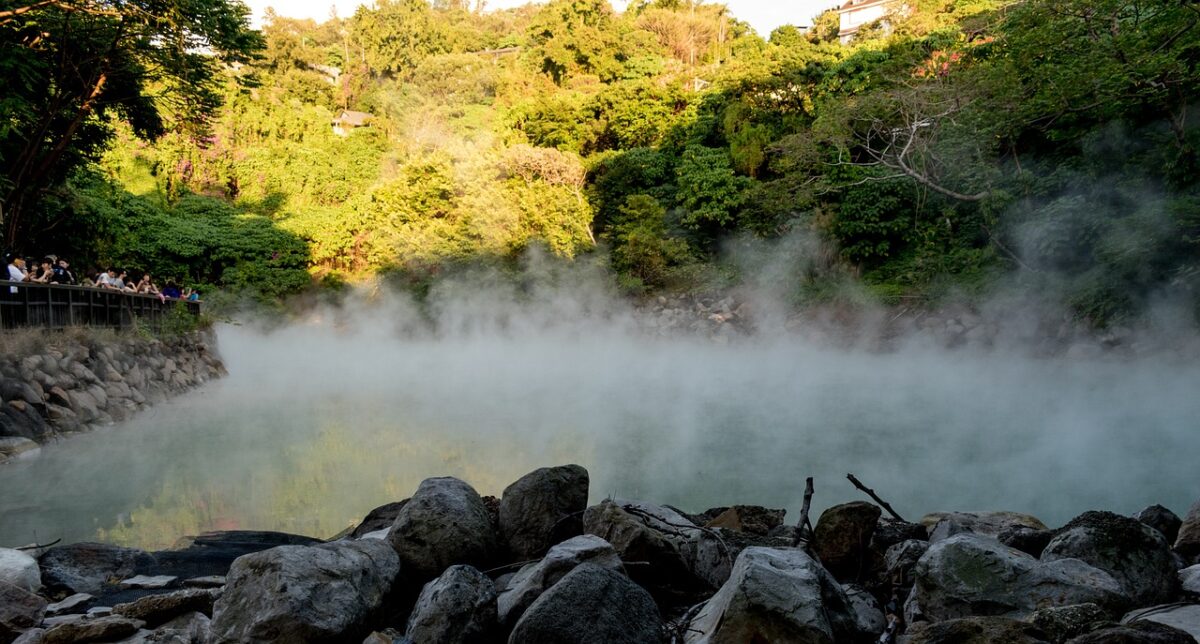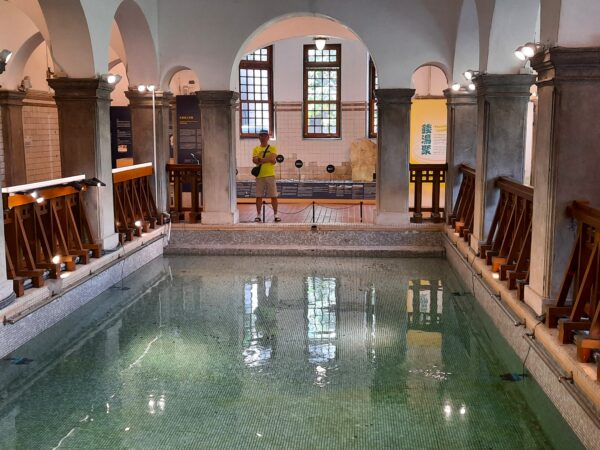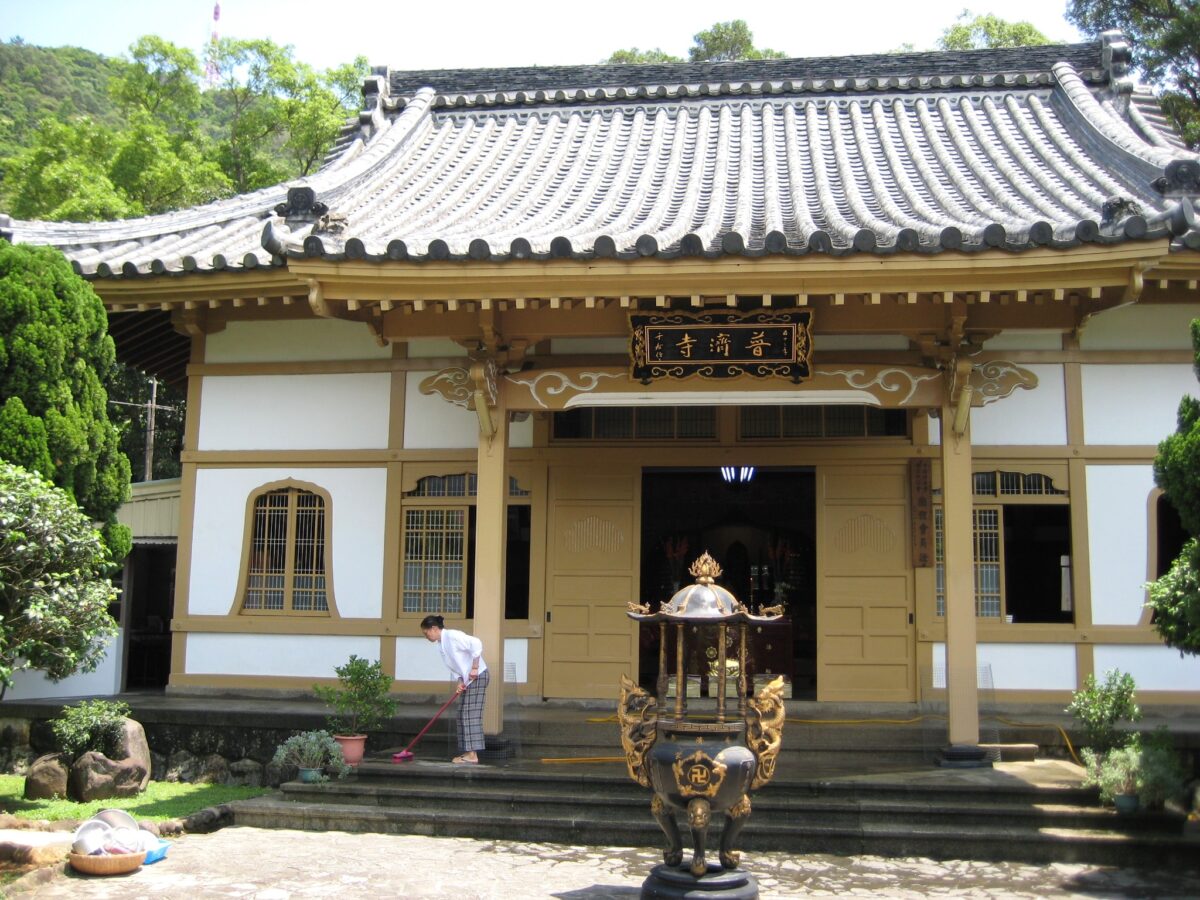Beitou & Xinbeitou | Taiwan

Now one of Taipei’s twelve districts, Beitou wasn’t even part of Taiwan’s capital city until 1968. Prior to that, it and much of what’s now Yangmingshan National Park were treated as a unique administrative area because the national leadership, including Generalissimo Chiang Kai-shek, had their official residences — and various secret bunkers — in the hills north of central Taipei.
Both what people call Beitou (a string of densely populated neighbourhoods connected by the Red Line of the Taipei Metro) and Xinbeitou (‘New Beitou’, at the base of the mountains, further from the Keelung River) enjoyed prosperity and popularity during the fifty years of Japanese occupation. Then as now, Xinbeitou’s appeal to outsiders revolved around the super-hot sulphur-tainted acidic water that spews out of the hillside and, since the 1890s, has been channelled into public pools and luxury hotels.

Visitors to Xinbeitou often spend a couple of hours touring its attractions before retreating to a hot-spring establishment. Most of the major sights are within walking distance of the metro station; getting around on foot is quite pleasant as there’s a good amount of shade and the traffic is seldom heavy. The Ketagalan Culture Centre makes a good first stop; inside this municipal building (admission is free) there are some displays of indigenous clothing and artefacts plus a fair bit of information. While the collection here isn’t as impressive as that displayed at Shung Ye Museum of Formosan Aborigines (across the road from the National Palace Museum), travellers pressed for time will find it a worthwhile introduction to Taiwan’s original people.
Historic hot springs
We wouldn’t normally mention a humdrum public facility but Beitou Branch of Taipei City Library is both externally appealing and a splendid example of green architecture. This amazingly energy-efficient structure has won prizes for sustainable design. Step inside to appreciate the use of wood, the large windows for natural light and ventilation, and the rainwater-flushed toilets. A more conventional attraction is the century-old Beitou Hot Springs Museum [second photo], the design of which was based on one of Japan’s most famous bathhouses. For decades this served as a place where ordinary members of the public (in other words, those who couldn’t afford to stay in a hotel) could relax in hot-spring water.
Just up the road you’ll find the Beitou Public Hot Spring aka Millennium Hot Spring. At the time of writing it was undergoing a thorough refurbishment that should be completed by May 2026. In recent years admission to this open-air spring was a bargain NTD60 (with an additional charge of NTD20 if you wanted your own locker) and stays were limited to two hours. All bathers were required to wear both swimsuits and shower caps, and to bring their own towels. The rules may not be exactly the same when it reopens, so do check before arriving.
If you’ve no problem with being naked among strangers, a thoroughly traditional experience can be had at Long Nai Tang Hot Springs (some sources refer to it as ‘Long Nice’), where people have been soaking since 1907. Inside there are two pools, one for each gender. Admission is NTD150; bring your own towel. In all hot springs, naked or swimsuit, indoors or outdoors, everyone is expected to wash their body thoroughly before getting in the water. If you just want to dip your toes, use the free foot-bath right outside Xinbeitou Metro Station.
Nature & spirit
Hell Valley [photo at the top], also known as the Thermal Valley, is an unmissable sight. The opaque blue-green pool emits mesmerising miasmas of steam, even in the hottest weather. Do take care when snapping photographs by the fence — falling in would inevitably be fatal, given that the water temperature is seldom below 90 degrees Celsius (194 degrees Fahrenheit).
Said to be Taipei’s best-preserved wooden colonial-era structures Puji Temple [third photo] occupies a slightly hidden spot on the hill above the hot-spring zone. This delightful Shingon Buddhist shrine is about 15 minutes on foot from Xinbeitou Metro Station. The existing juniper-walled hall dates from the early 1930s. For reasons unknown, neither the local government nor the temple management seem willing to make the most of this landmark’s tourism potential. You might well have the place to yourself!
Another place of worship that’s very pleasing on the eye yet ignored by almost every tourist (and even the majority of local residents) is the Immaculate Conception Church. This Roman Catholic hall of prayer was completed in 1954 but has been unused and locked up for some years. Heritage buffs describe it as an example of Romanesque Revival architecture. If you want to go looking for it, it’s easy to find at 108 Wenquan Road, just a few doors east of Puji Temple.
Staying overnight
Perhaps the most upmarket establishments here is Villa 32, where guests can expect to pay upward of GBP1,000 (US$1,270) per night but enjoy exceptionally attentive service, large rooms, and uncrowded hot-spring facilities. Somewhat less pricey options in the vicinity include the four-star yet highly rated Radium Kagaya Taipei and The Gaia Hotel—Taipei.
Staying in Xinbeitou can be part of a luxury private tour of Taiwan. Alternatively, our expert itinerary planners can design a tour that would give you a few hours here after a visit to Yangmingshan National Park or when returning from Tamsui. If you’re thinking of coming to Taiwan, contact us today to explore various enticing travel options.

